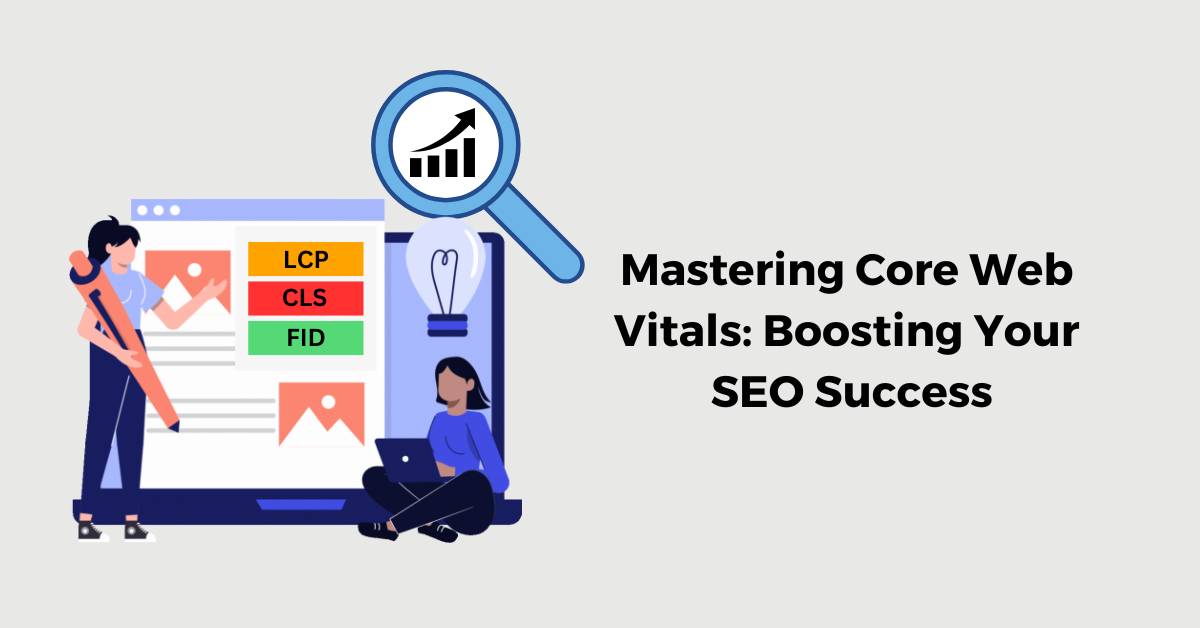What is the Role of Core Web Vitals in SEO Success?
In the ever-evolving landscape of search engine optimization (SEO), understanding the mechanisms that influence your site’s ranking is crucial. Among the latest additions to Google’s ranking factors are Core Web Vitals. These metrics have rapidly gained importance in determining SEO success, making it essential for website owners and developers to grasp their implications thoroughly. In this guide, we will explore what Core Web Vitals are, how they impact SEO, and the steps you can take to improve them to enhance your site’s performance.
Understanding Core Web Vitals
Core Web Vitals are a set of metrics introduced by Google to quantify key aspects of user experience on a webpage. They focus on three main areas: loading performance, interactivity, and visual stability. By measuring these factors, Core Web Vitals provide insights into the quality of user interactions on your website.
Largest Contentful Paint (LCP)
Largest Contentful Paint, or LCP, is a metric that assesses how quickly the main content of a webpage loads. It specifically measures the time it takes for the largest content element—such as an image, text block, or video—to be visible in the user’s viewport. A good LCP score indicates that your site loads quickly, providing users with the information they seek without needless delays.
First Input Delay (FID)
First Input Delay, or FID, measures the time it takes for a webpage to become responsive to a user’s initial interaction. This could be anything from clicking a button to entering data into a form. An optimal FID score suggests that a site can quickly process user inputs, thereby offering a fluid and seamless user experience.
Cumulative Layout Shift (CLS)
Cumulative Layout Shift, or CLS, evaluates the visual stability of a webpage. It quantifies how much the layout shifts during the loading phase. Frequent or significant shifts can lead to a frustrating user experience, as elements move unexpectedly. A low CLS score means a stable layout, ensuring users can interact with the content without disruptive changes.
Core Web Vitals and Their Impact on SEO
Google has integrated Core Web Vitals into its search ranking algorithm, acknowledging their significance in delivering a positive user experience. Websites that score well in these metrics are more likely to rank higher on search engine results pages (SERPs). This is because fast, responsive, and stable web pages not only enhance user satisfaction but also reduce bounce rates, signaling to search engines that your content is valuable and engaging.
The emphasis on Core Web Vitals reflects a broader trend in SEO: user experience is becoming as important as content relevance. By prioritizing these metrics, Google encourages site developers to focus on building user-friendly websites, thus aligning SEO success with improved user interactions.
How to Measure Core Web Vitals
Measuring Core Web Vitals is a straightforward process, thanks to a suite of tools offered by Google. These tools help you assess your site’s performance and identify areas for improvement.
- Google PageSpeed Insights: This tool provides detailed reports on LCP, FID, and CLS scores, along with actionable suggestions to enhance performance.
- Lighthouse: An open-source tool integrated into Chrome DevTools, Lighthouse offers in-depth insights into various performance metrics, including Core Web Vitals.
- Web Vitals Extension: A Chrome extension that displays real-time Core Web Vitals metrics, letting you monitor your site’s performance as you browse.
Strategies to Improve Core Web Vitals for Better SEO
Improving your site’s Core Web Vitals is pivotal for optimizing its search engine visibility. Here are some strategies to enhance each of the core metrics:
Improving LCP
To improve Largest Contentful Paint, consider implementing the following:
- Optimize images by using formats like WebP and leverage lazy loading for below-the-fold content.
- Minimize server response times by using a Content Delivery Network (CDN) and optimizing server configurations.
- Remove unnecessary CSS and JavaScript to speed up page loading times.
Reducing FID
Enhance First Input Delay with these methods:
- Reduce the execution time of JavaScript by cutting down on third-party scripts and deferring non-essential scripts.
- Employ browser caching to store frequently accessed content.
- Implement code splitting so users can interact with above-the-fold content sooner.
Minimizing CLS
To lower Cumulative Layout Shift, focus on:
- Reserve space for images and ads using the appropriate dimension attributes.
- Avoid inserting new content above existing content except in response to user interactions.
- Use CSS transform animations rather than layout changes to maintain visual stability.
Case Studies or Examples
To illustrate the impact of Core Web Vitals on SEO, consider studies where businesses optimized their vitals, leading to improved rankings and user engagement. For instance, a company that successfully optimized its LCP metric saw a 25% increase in its organic search traffic.
Common Mistakes to Avoid
While striving to optimize Core Web Vitals, it’s crucial to avoid common mistakes that could undermine your efforts. Here are several pitfalls:
- Neglecting mobile optimization: Ensure your site is mobile-friendly, as many users access the web via mobile devices.
- Overloading with ads: Excessive ads can negatively impact load times and layout stability.
- Ignoring continuous monitoring: Regularly check your Core Web Vitals scores to maintain a high-performance website.
Conclusion
Core Web Vitals play a vital role in determining your site’s success on search engines. By offering a direct link between user experience and SEO, these metrics provide a roadmap for enhancing page performance. By understanding and optimizing LCP, FID, and CLS, you can significantly improve your site’s chances of ranking higher and retaining users. As Google’s algorithm continues to evolve, prioritizing these metrics should be an integral part of your SEO strategy.
Read more about optimizing page speed
- Implement a systematic approach for continuous improvement.
- Stay updated with the latest best practices in web performance.
- Integrate regular benchmarking into your workflow.
By focusing on Core Web Vitals, you position your site for long-term SEO success, ensuring it meets the ever-increasing standards set by search engines and users alike. Embrace these metrics as part of your strategic initiatives to create engaging and high-ranking web pages.







